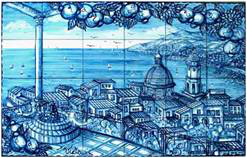Speaker
Dr
Thomas Ernst Schmid
(Technische Universität München, Germany)
Description
Purpose: We investigate the use of a microchannel proton irradiation, which is a matrixwise application of a proton microbeam for tumor therapy. It minimizes the risk of normal tissue damage in radiation therapy of tumors while keeping tumor control as for conventional broad beam irradiation due to the lateral scattering of the protons on their way to the tumor.
Methods: Microbeam irradiation was performed in a 3D human skin model (EpidermFT, MatTek, USA), at the microprobe SNAKE of the 14 MV Munich tandem accelerator. A counted number of 20 MeV protons were applied either homogeneously or in 10 or 50 µm wide channels separated 500 µm to compare the influence of the irradiation mode on various damage endpoints.
Results: Cellular viability measured by the MTT assay revealed only small changes in tissue viability when irradiating with proton microchannels in comparison to unirradiated controls. In contrast, homogeneously irradiated tissues had significantly lower tissue viability. Levels of Interleukin-6, TGF-Beta and MMP-1, which are produced at the site of inflammation, decreased significantly faster within 14 days after microchannel irradiation compared to homogeneous proton irradiation. Chromosome aberrations, measured as micronuclei induction in keratinocytes, showed normal radiobiological effectiveness (RBE) of 1.21±0.17 for homogeneously irradiated tissues while microchannel irradiation showed an effectively reduced RBE of 0.24±0.10 and 0.41±0.10 for 10 µm and 50 µm wide channels, respectively.
Conclusion: We conclude that proton microchannel irradiation produces significantly less inflammation and DNA damage than homogeneous proton irradiation.
This work has been supported by the DFG Cluster of Excellence: Munich-Centre for Advanced Photonics.
Author
Dr
Thomas Ernst Schmid
(Technische Universität München, Germany)
Co-authors
Mr
Christian Siebenwirth
(Universitaet der Bundeswehr München, Germany)
Mr
Christoph Greubel
(Universitaet der Bundeswehr München, Germany)
Prof.
Günther Dollinger
(Universitaet der Bundeswehr München, Germany)
Prof.
Jan Wilkens
(Technische Universität München, Germany)
Prof.
Michael Molls
(Technische Universität München, Germany)
Prof.
Multhoff Gabriele
(Technische Universität München, Germany)
Dr
Olga Zlobinskaya
(Technische Universität München, Germany)
Mrs
Stefanie Girst
(Universitaet der Bundeswehr München, Germany)
Dr
Volker Hable
(Universitaet der Bundeswehr München, Germany)

